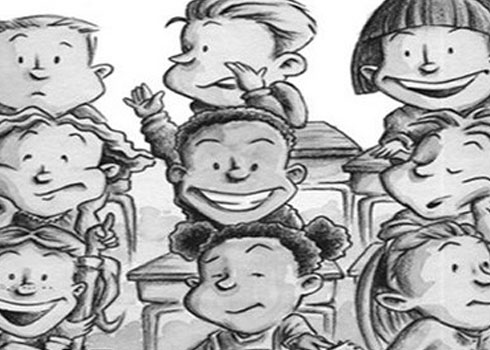No question, there is growing interest among researchers and educators in teaching mindfulness to children in school settings. Reasons for teaching this skill include increased motivation and attention, self-regulation, and a willingness to take risks as well as responsibility for one’s own learning.
In 2008 an exploratory project took place in three New England states, pointing to the feasibility of teaching children mindfulness techniques, as well as their receptivity to learning and practicing mindfulness. The project also offered a model of collaboration between school personnel, the community, and institutions of higher education.
Approximately seventy-five fourth grade students in New Hampshire, Vermont, and Massachusetts participated in a ten-week small group course—with tangible results. The project—called The Practical Effects of Teaching Mindfulness to Children—had the specific purpose to explore school counselors’ use of mindfulness education with elementary school students in small groups. If mindfulness techniques could be taught for ten weeks, in a school-based small-group format, organizers hoped there would also be evidence of enhanced attention and concentration in the participants following the experience.
The project was led by the School Counselor Mindfulness Collaborative for Research and Teaching, which included school counselors practicing in the field, graduate students, a school counselor educator and a clinical psychologist. The collaborative included Lynn Merlone of Jaffrey Grade School (New Hampshire), Susan Theberge of Keene State College, and Robin Gregg, of Contoocook Valley School District in Peterborough, New Hampshire. The New Hampshire School Counselor Association and The University of Massachusetts Center for School Counseling Outcome Research supported the project, based in the School Counselor Program at Keene State College in Keene, New Hampshire.
The curriculum consisted of offering participants ten lessons of approximately thirty to forty-five minutes each. Activities were adapted from a variety of sources, including conflict resolution, diversity training, and mindfulness education. Each session focused on teaching and modeling specific mindfulness techniques that students could learn, practice, internalize, and ultimately use independently with continued support.
Children participated in activities such as focusing on the breath; paying close attention while eating; walking slowly and paying attention to all the movements and sensations involved in each step; and paying attention to what it feels like to move one’s body in a mindful way. Each meeting included group discussion and shared reflection by the participants on their experiences of mindfulness both in and outside of the class group. At the end of each session, students received supportive instructional materials called “Home Practice Cards.”
The success of the exploratory project was evident to all those who participated. Those who led the project found the model used was both powerful and effective, and worked in good part because of the deep commitment to both the work and the relationships among group members.
Comments collected from students who took part in the program were extremely positive. One student said: “I notice that I pay attention more, well, I used to look up at the ceiling in math. I used to daydream and now I pay attention.” From another—“In class I’ve been more focused because before, when we were reading Enemy in the Fort I would tell my teacher that I couldn’t concentrate and so I would go out in the hall and read by myself, and now I can stay in the class and read.” Yet another—“I noticed that the group helped me not only to concentrate more, but for some reason it got me calmer and I did not have a lot of freak outs at home.” And even this—“[I’m] not feeling guilty about being me.”
Read on for a sample exercise followed by a home practice card. Both used during the program.
Exercise: Breathing with our planet and its all living creatures
As we end the group, we are going to practice a breathing exercise called Breathing with our Planet Earth. We share the air we breathe with all other living things. As we do this activity, we will feel our connection to the many living, breathing creatures that share this earth with us. Finding a comfortable sitting position. Breathing in…Pause …and breathing out…Pause…imagining all the living creatures all over our planet earth breathing in… Pause…. and breathing out…Pause…all living things large and small….breathing in…Pause…and breathing out…. Pause…the humming birds and the chickadees….breathing in and breathing out…Pause….the lizard and the frogs…breathing in and breathing out….the elephants and the hippopotamuses …breathing in…Pause and breathing out…Pause we are breathing in and breathing out…all creatures large and small all over our planet earth are breathing in and breathing out together. And now let’s take turns going around the circle and say “Breathing in and breathing out with the name of one living creature. I will start. “Breathing in and breathing out with the (name of a living creature).” Go around the group, each person repeating “Breathing in and breathing out with” and naming a creature. Bell This same activity could be done naming people or groups of people all over the planet.
Home Practice Card
Give each child an index card with the loving kindness words printed on it.
May you be safe
May you be happy
May you be healthy
May your heart be filled with loving kindness
You might want to share what you practiced today with someone at home. Sometime during the week, maybe before you get up in the morning or before you go to bed, send this loving kindness to yourself or someone you love.
For more mindfulness and education stories on Mindful.org, click here.






